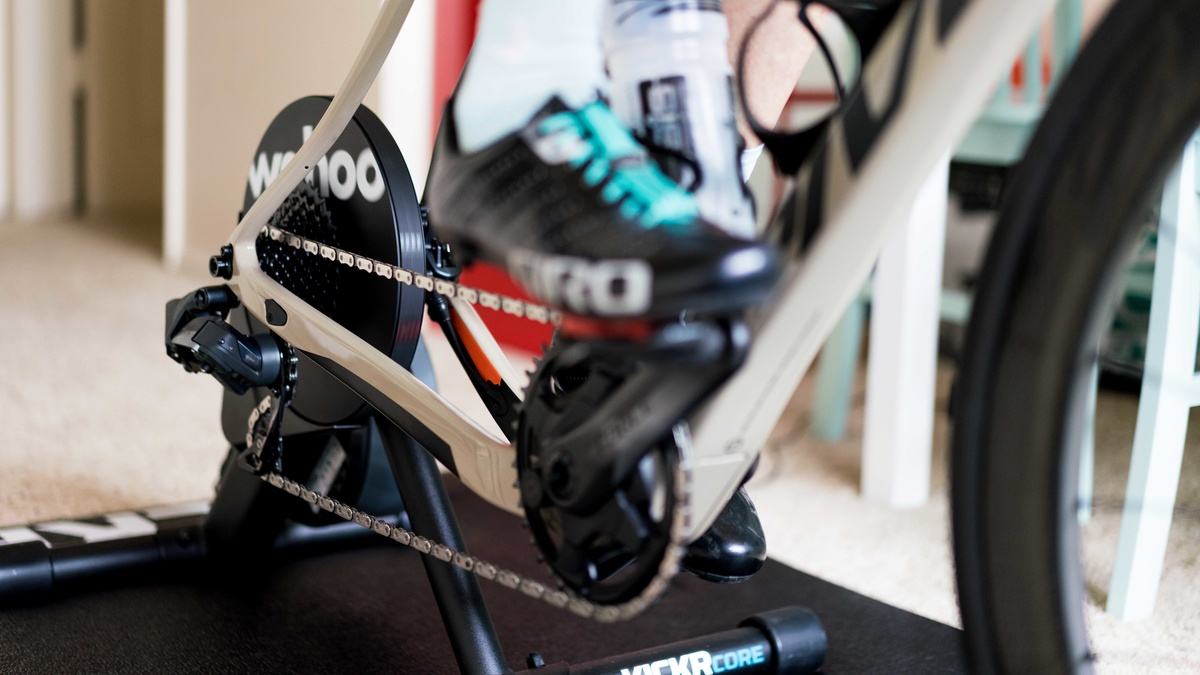For many of us, cycling isn’t just about the pursuit of performance or fitness – it’s our social fabric, our motivation, and our coping mechanism to decompress from a busy life while trying to maintain some semblance of balance. When we get injured, whether it’s from a high-speed crit crash, a run-in with traffic, or a facepalm moment of housecat underfoot while running out the door for a quick spin, it can be hard to stay positive when that connection and coping mechanism suddenly isn’t available.
In the olden, pre-direct drive trainer days, getting back on the bike soon after injury was a cumbersome process, hinging on a support network of people to get the bike onto the trainer, crank down the resistance, and then return daily to properly air up the tires and make sure all was in working order. That’s a lot of hoops to jump through and usually meant those first few weeks after a serious injury was spent moping on the couch and watching your favorite bike gather dust in the corner as your fitness withered away along with your spirits. Or at least that was my experience.
Since then, technology has obviously changed, and the direct-drive KICKR and new KICKR CORE have reshaped the timeline for return to fitness, minimizing barriers to cycling by providing a safe, stable, maintenance-free platform with easily controllable resistance for athletes at all stages of recovery.
I recently had the “opportunity” to see these changes first-hand after a classic cyclist-meets-pavement encounter and the accompanying upper extremity injuries that made riding outside difficult, and potentially crashing again a really bad idea. Not that many years ago, I’d have been off the bike for weeks, but that shiny new KICKR in the spare room meant that now I was back up and spinning within just a few days. Granted, it was super chill, but it was still riding. In practical, performance-focused terms, this meant that I lost less fitness and was able to start adding intensity sooner than if I had to wait for clearance to ride outside on my own. But most importantly, I got to spin out some stress, decompress from the days, and spend quality time appreciating the small act of being able to ride a bike, which did wonders for my overall outlook on recovery.
The KICKR also reshaped progress once I did finally get the go-ahead to venture outside. In the past, my first few rides with free reign to test limits would usually end in excessive amounts of pain too far away from home after an epic overestimation of my body’s capacity to handle miles and intensity. Which set things back and just made the recovery process longer. This time around, I used the outside miles for chill coffee rides to catch up with friends and saved the limit testing for indoors on the KICKR in virtual lands, knowing that when my body said it was done for the day, I could listen and have immediate access to ice treatment and recovery.
From there, it’s often a fairly quick progression to fewer limitations and thinking about real training, which can be, somewhat ironically, the most mentally challenging part of injury recovery. At that point, in particular, it’s easy to get bogged down in the numbers and negative comparisons to previous years. However, with the right tools to record efforts and a revamped set of achievable goals as guidance, the rebuilding process can also be incredibly rewarding. Between managing recovery zones to minimize junk miles, dialing in erg mode to hit targeted intervals, and providing heaps of data to analyze progress, the KICKR takes disruptive weather, inopportune elevation changes, and our general propensity to add on “just a few more miles” completely out of the equation and paves a safer, more efficient path back to fitness.
 Lindsay Wetzel Polin is a sport psychology consultant and health education specialist with almost two decades of cyclocross and road racing experience. Her coaching philosophy utilizes a holistic approach to manage the mental and physical demands of life and sport to achieve success. You can find her on Instagram at @sprintinkitten.
Lindsay Wetzel Polin is a sport psychology consultant and health education specialist with almost two decades of cyclocross and road racing experience. Her coaching philosophy utilizes a holistic approach to manage the mental and physical demands of life and sport to achieve success. You can find her on Instagram at @sprintinkitten.



